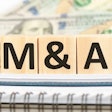
Cats’ appeal expanded among several demographic groups in the United States during the past decade. Various social and economic forces had been pushing U.S. pet owners towards cats. Then the pandemic boosted cat ownership rates while encouraging bonding and subsequent premiumization of cat food and treat purchases.
These factors may have helped U.S. retail sales of cat food to reach an estimated US$12.1 billion in 2021, up 6.6% from US$11.4 billion in 2020, market research firm Packaged Facts’ publisher and director David Sprinkle wrote in “U.S. Pet Market Focus: Pet Food Update, 2021.” He forecast cat food sales to hit US$15.4 billion in 2025. If it happens, that will mean cat food sales had a 6.7% compound annual growth rate (CAGR) from 2020-2025.
Wet cat food and cat treats may be two keys to that growth. Pet owners bought more of both over the past two decades. Packaged Fact’s 2006–2007 data reflect a usage rate of 39% for cat treats, growing to 60% as of 2020–2021. At the same time, purchasing rates for wet cat food rose from 49% to 60%.
Cat owner spending per household
On average, U.S. cat-owning households spent US$351 on food and US$53 on treats in 2020 and US$217 on non-food pet supplies. That’s approximately US$186 dollars spent on food and US$28 dollars spent on treats per cat, purr catpita.
Cats eat less than most dogs, and the U.S. dog ownership rate exceeds that of cats. Yet, although the cat food market remains less than a third the size of dog’s, Sprinkle sees opportunities for premiumization to further develop in the cat segment. Cat product sales of US$30.9 billion represented 29% of the US$107.3 billion U.S. pet products market in 2020. Dogs made up 67% and other animals 4%. Cat food and treat sales made up 30% of all pet food sales.














